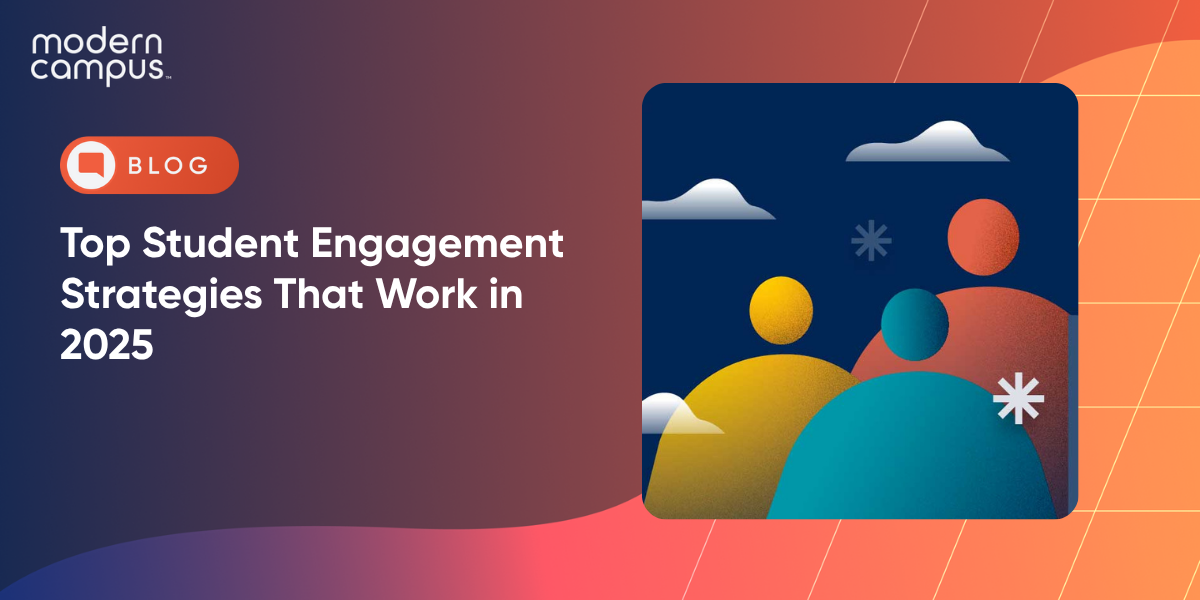Your Broken Back-End is Killing Your Staff
There’s “work”, and then there’s “work”. The former is a mere definition: It’s the effort applied to achieve a result. The
latter is a form of cruelty. Its goal is identical to that of its counterpart, but
instead of achieving results via the most direct route, simple actions are encumbered
with multiple steps that act as hurdles to said goal.
Continuing Education staff are doing far too much work these days. Actions that should require one click require 20. Processes that should be automated aren’t. Data that should be easily accessible isn’t. Systems that should work… don’t.
Non-traditional divisions are hailed as hubs of ingenuity and innovation. But their capacity to innovate is hampered by inefficiency. After all, when staff are picking up the slack for outdated processes and software, their energy goes less towards innovation and more toward doing work that could be done instantly by a computer. Inefficiencies of this magnitude don’t just negatively affect the student experience. They’re also the death knell for staff satisfaction and retention. They make the job staff signed on for near-impossible with the tools provided.
The Tools Are the Problem
When the time people spend on repeatable and automatable tasks is minimized, they’re capable of high-impact work. Whether that’s providing more personalized service to students, working on outreach efforts or launching innovative programming – having access to easy-to-use back end systems allows staff to focus on growing the institution.
And when staff are happy, the institution prospers.
Here are three ways division leaders can put their staff’s time and energy where they count.
1. Automate Repeatable Tasks
Program leaders shouldn’t need to manually inform every stakeholder of every minute change to a new course. Handling finances, engaging with learners and major accounts, importing historical enrollment, course and program data… these are all things that can be performed by a robust back-end system, yet too frequently are left in the busy hands of staff. Schools end up having to paper over the cracks left by these inefficiencies to provide an experience that appears automated but is in fact painstaking. It creates just as many problems as it “solves”.
When left to the machines, staff can reduce bottlenecks and get offerings to market easily while maintaining a high standard of quality.
Mohan Mailvaganam, Director of Process Automation at Xerox at the time of writing, told the EvoLLLution that eliminating manual workflows gives schools an advantage.
“With higher education being a competitive industry supporting a global market, the institutions that can accelerate the adoption of workflow automation will have a competitive advantage, not only in driving top-line revenue and attracting students but becoming more operationally efficient.”
Leaving these tasks to software also minimizes the risk of human error; errors much more likely when administrators are balancing multiple duties at once.
2. Centralize Everything
If the transition to a digital age has taught us anything, it’s that information is more useful when it’s all in one place. When each of your school’s programs has its own distinctive website, your digital presence is not user-friendly. If students have to sift through dozens of non-credit websites to find a non-credit program they’re interested in, or if they can’t register for a course in the same place they found the course, it’s a massive turn-off. You don’t search for a new pair of shoes at one store and pay for them at another down the street.
Centralized, consolidated systems made it easier to provide all parties with consistent and structured access to the information they need across the institution.
Many institutions also leave their staff with no centralized space to track non-credit student and program information. This takes administrators on a point-and-click adventure that’s as aggravating as it is arbitrary. Apart from the immediate headache, the combined hours lost scrolling needlessly through similar pages is incalculable.
At University of Minnesota, Senior Business Analyst Kristy Davis recalled endless switching between systems to complete simple tasks.
“We had a number of homegrown and purchased systems from a variety of vendors all operating on our campus and doing effectively the same things for different units and divisions,” Davis told the EvoLLLution. “It created a number of redundancies and the impact was felt in the complexity of our environment, the inconsistency of the student experience and the challenges faced by staff in managing their offerings.”
Centralized, consolidated systems made it easier to provide all parties with consistent and structured access to the information they need across the institution.
“…consolidating into one system has increased efficiencies around registrations and the overall administration of non-credit courses and conferences being offered by divisions across the university,” Davis said.
3. Fast-Track and Customize Offerings
Continuing education is at the mercy of the market. The skills and tools the market demands of workers are ever changing, and it’s CE’s duty to reflect that in its offerings. Now more than ever, courses need to be assembled and pushed out to sea as quickly as soon as program leaders spot an opportunity.
The right audience needs the right information at the right time, and institutions risk falling short of this using more traditional means. They rely on legacy systems and outdated processes that suck the life out of faculty and staff; life that’s sorely needed if an institution prides itself on relevancy and serving student needs.
Program leaders can get new courses on the floor quickly by automating the repetitive aspects of curriculum creation, alerting the right people when their input is needed. In an era of “student consumerism”, it’s imperative to meet demand with a ready supply.
Joe Sallustio, Senior Vice President and Chief Experience Officer at Lindenwood University, told the EvoLLLution that tapping new markets is going to be essential as learning modalities change rapidly.
“…traditional institutions had to move quickly to offer remote/virtual learning and institutions already with an online footprint had to expand their offerings to accommodate students to minimize learning disruptions,” Sallustio wrote. “Differentiation is going to become even more important than it was before – there are simply going to be more choices for students, even with residential attendance still being an option. The competition for students is going to be at an all-time high.”
Program leaders can get new courses on the floor quickly by automating the repetitive aspects of curriculum creation, alerting the right people when their input is needed. In an era of “student consumerism”, it’s imperative to meet demand with a ready supply.
Spare Your Staff, Correct Back-End Inefficiencies
Non-traditional institutions thrive on continuous improvement to increase enrollment and expand programs. It’s hard for faculty and staff to get “creative” when their time is spent on simple tasks made arduous by systemic inadequacies. You don’t bring a knife to a gun fight, and you don’t send a person to do a computer’s job.
When staff have the tools to workshop their division, they can spend their time on the kind of work that institutions want to be known for.
4 Ways to Stay Agile in Continuing Education
Learn how tailor-made software delivers the flexibility needed for modern campuses to stay competitive.
Last updated: October 1, 2020



